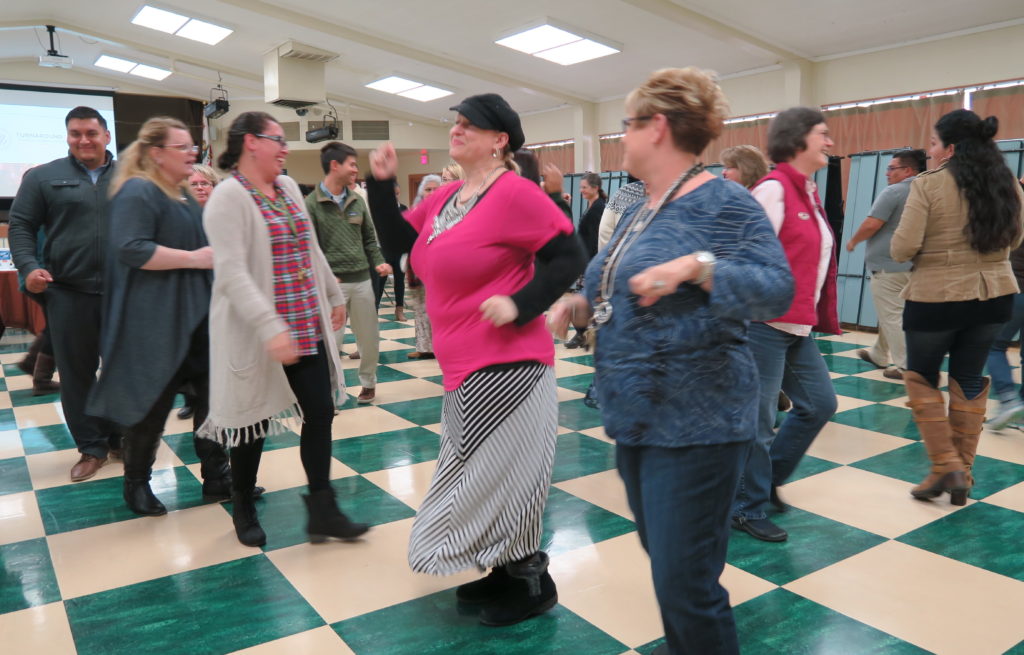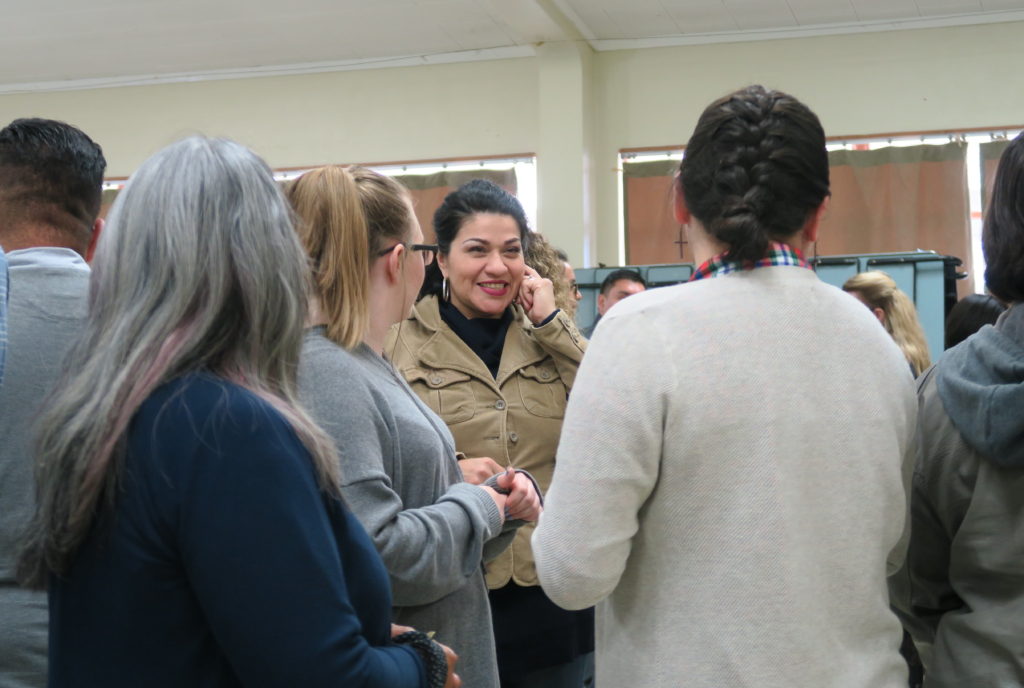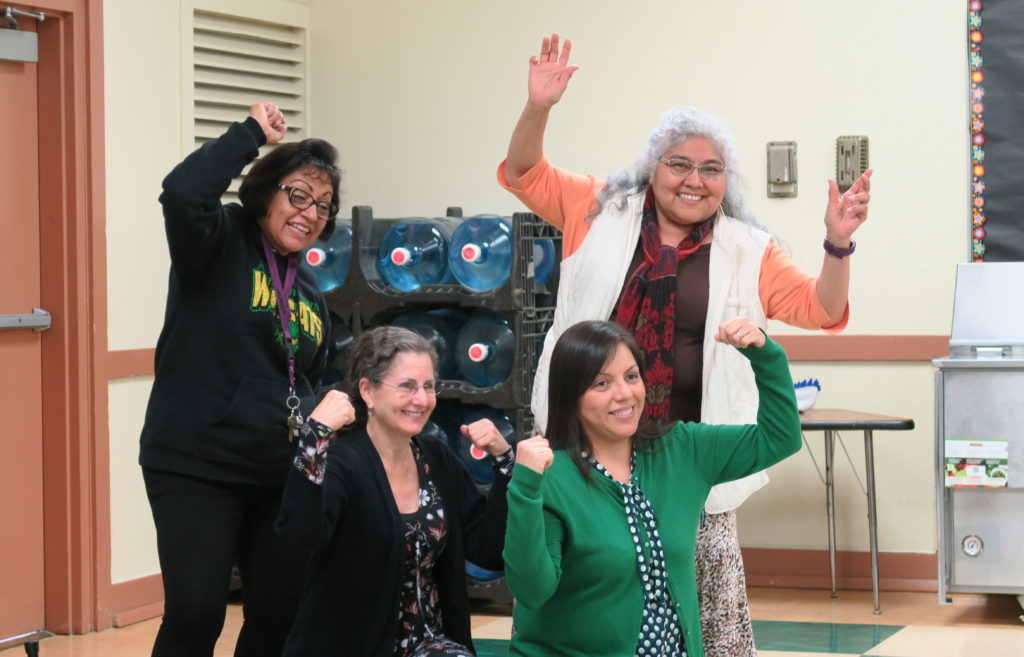Here at Turnaround Arts: California, we host regular professional development (PD) for teachers across our 17 schools. This is because we know that increasing the use of the arts as a learning and engagement tool increases the confidence and academic success of our students.
During our latest PD adventure, we partnered with P.S. ARTS to host an interactive training with the teachers of Avenal Elementary School. P.S. ARTS’ Darryl King, who serves seven Turnaround Arts: California schools as a Regional Coach, shared:
“At the heart of the arts, is love. P.S. ARTS believes that differentiating learning opportunities for teachers is how we communicate that love and hold space for educators to develop as committed practitioners of the arts. It is our unique ability to customize our coaching strategies, from teacher training, to one-on-one mentoring, to match the culture and needs of each individual school.”
We customized our latest teacher workshop by starting with dance. We like to boogie and we love to amp up our energy for the learning ahead.

At various dancing intervals – we paused the music and asked teachers to pair up for some introductory dialogue.

We asked them a few questions:
- What was your school like before Turnaround Arts?
- What did it feel like or look like?
- How is your school improving through Turnaround Arts?
- What does that feel like or look like?
Our final prompt:
- What one word would you use to describe where you see your arts-rich school of the future? Create a tableau — a frozen group picture — demonstrating it.
One of our favorite tableaus represented strength.

Our teachers see their future arts-rich school as strong and powerful.
Principal Blanca Rodriguez knows why.
“Teachers at Avenal Elementary School benefit greatly from these Turnaround Arts: California workshops. They get hands-on experience by trying techniques with their peers. They have the opportunity to ask questions for clarity and gain feedback on what they have already begun to implement in their classrooms.”
In their fourth year as a Turnaround Arts school, Avenal Elementary boasts some of the highest annual growth rate in student test scores of any school in their district, with particular growth for English Language Learners. Workshops like this encourage teachers to sustain and deepen the integration of the arts into their classrooms.
As our teachers and principals use the arts as a learning and engagement tool, the reading, language, math, critical thinking, and social skills of our students begin to improve. We’re taking the steps to catalyze a positive and strong school environment where students are motivated to learn and teachers are eager to teach.

Midway through our Avenal workshop, Darryl King shared a refresher of Visual Thinking Strategies (VTS), an arts-based strategy that many of our partner schools have implemented school-wide.
The VTS method encourages educators to ask three open-ended questions about visual art:
- What’s going on in this picture?
- What do you see that makes you say that?
- What more can we find?
Unlike some standardized tests and processes of rote memorization, these open-ended questions encourage students to closely look at an artwork, vocalize details they observe, and back up their comments using visual evidence. VTS fosters their ability to think critically while increasing their speaking and listening skills.
Teachers left the PD excited to return to their classroom and use tableau and VTS to support student learning.
It’s absolutely clear. We’re building student and teacher skills now to guide Avenal Elementary into a strong, and certainly arts-rich, future.
